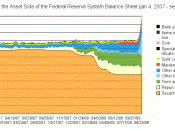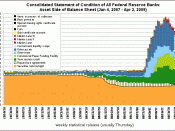Reporting Goodwill on Financial Statements The Current Reporting Style for Goodwill (amortization) The reporting guidelines for goodwill are in APB (Accounting Principles Board) Opinions 16 and 17. Opinions 16 and 17 state the following basic guidelines to amortize goodwill: ÃÂè Amortize over its useful life not to exceed forty years.
ÃÂè Charge the amortization of goodwill to operating expenses.
ÃÂè Amortize goodwill using the straight-line method unless there is a more appropriate method.
ÃÂè If the amortization is material, a disclosure of the charge is necessary, as well as the method and period of amortization (Kieso, pp. 611).
The reporting style of amortization of goodwill is appropriate for several reasons. First of all amortization is a good way of matching costs and revenues. After the purchase of a company, the acquired company begins to merge with the acquiring company. If goodwill continues for an extended period of time (5-40 years) there is a point that goodwill is continuing because the acquiring company has generated it, and since goodwill is not generated internally this goodwill should be written off.
The amortization of goodwill must use a systematic and rational method over its life thus forcing the acquiring company to live by the original choice of the useful life. Amortization of goodwill is also in line with international accounting. The last advantage of amortization is that it is easier for investors to understand because they are familiar with it and it is similar to deprecation which investors also understand.
Although there are many reasons to amortize goodwill there are also many reasons not to amortize. The first disadvantage of amortization is that it does not represent the true value of the goodwill. There are many analysts who eliminate amortization from their analysis because it provides little information to users of...


